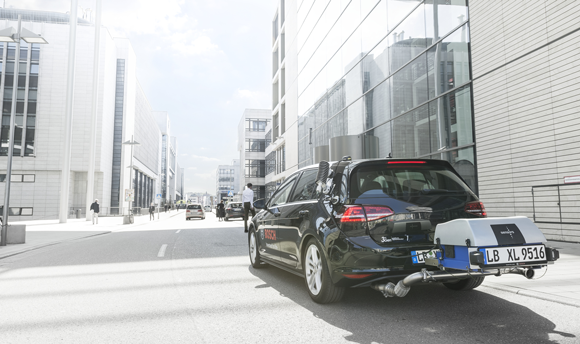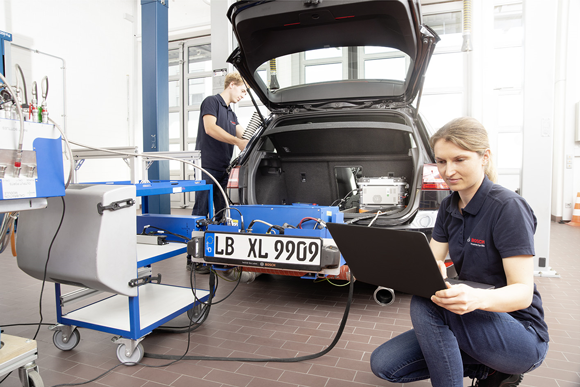Bosch diesel technology to drastically cut NOx emissions
April 25, 2018

Bosch has tested its diesel technology in a full range of driving conditions
New developments from Germany’s Bosch Group could enable vehicle manufacturers to drastically reduce emissions of nitrogen oxides (NOx), resulting in levels up to ten times lower than those scheduled to come into force from 2020. Even in real driving emissions (RDE) testing, emissions from vehicles equipped with the new Bosch diesel technology are reported to be significantly below current limits of 168 milligrams of NOx per kilometre, resulting in as little as 13 milligrams of NOx.
“There’s a future for diesel. Today, we want to put a stop, once and for all, to the debate about the demise of diesel technology,” stated Bosch CEO Dr Volkmar Denner, speaking at the company’s annual press conference.
Bosch engineers are said to have achieved this breakthrough with a combination of advanced fuel-injection technology, a newly developed air management system, and intelligent temperature management. As the measures to reduce NOx emissions do not significantly impact consumption, the diesel retains its comparative advantage in terms of fuel economy, CO2 emissions, and therefore climate-friendliness.
“Bosch is pushing the boundaries of what is technically feasible,” Denner added. “Equipped with the latest Bosch technology, diesel vehicles will be classed as low-emission vehicles and yet remain affordable.”
Since 2017, European legislation has required that new passenger car models tested according to an RDE-compliant mix of urban, extra-urban, and freeway cycles emit no more than 168 milligrams of NOx per kilometre. As of 2020, this limit will be cut to 120 milligrams. It was reported that even when driving in particularly challenging urban conditions, where test parameters are well in excess of legal requirements, the average emissions of the Bosch test vehicles are as low as 40 milligrams per kilometre.

Bosch reports results of as little as 13 milligrams of NOx per km
Even with this technological advance, the diesel engine has not yet reached its full development potential, the company stated. Bosch now aims to use artificial intelligence to build on these latest advances, resulting in the development of a combustion engine that – with the exception of CO2 – have virtually no impact on the ambient air.
“We firmly believe that the diesel engine will continue to play an important role in the options for future mobility. Until electromobility breaks through to the mass market, we will still need these highly efficient combustion engines,” Denner added.
The CEO’s ambitious target for Bosch engineers is the development of a new generation of diesel and gasoline engines that produce no significant particulate or NOx emissions. Denner wants future combustion engines to be responsible for no more than one microgram of NOx per cubic metre of ambient air – the equivalent of one-fortieth, or 2.5%, of today’s limit of 40 micrograms per cubic metre.















